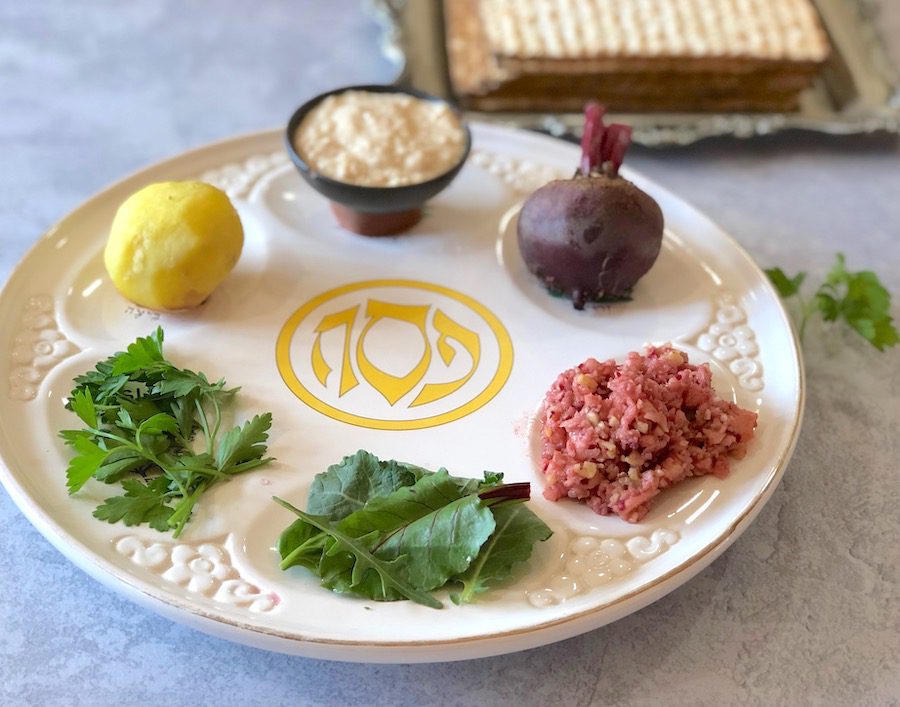Jewish celebrate Passover to commemorate the end of Israelites slavery in Egypt. Passover is celebrated for eight days and Seder is held on the first day or first two days of Passover. All family members meet together at one place to have a special meal-Seder and retell the story of Exodus. Haggadah is a written Seder guide and all Jews use this to retell the story. In this guide, you will get to know about everything, even about the symbolic food items. The seder plate is the centerpiece of the table and most of the food items are placed on the Seder plate. Food items on the Seder plate are used as sensory elements for recalling the Passover story. You can also celebrate Passover out of the town by participating in Passover programs. Various food items are prepared for the Passover celebration and all of them are described below:
The Seder Plate
The seder plate is a very important part of the Passover celebration. The Seder plate is comprised of six different items and all of them are symbolizing something. If you have a good budget, you can consider purchasing a silver or china plate. Otherwise, you can also decorate various symbolic food items of Seder on paper plates. You should consider decorating these paper plates with colors.
You should prepare the Seder food in advance so that you can properly decorate every item on the Seder plate. Though there can be some variation in the Seder plate, there are some items that will always remain the same: an egg, horseradish, and a lamb shank bone.
Karpas
Karpas represents hope and redemption and it is a vegetable, preferably parsley. The Karpas is served along with a bowl of salted water or vinegar that represents the tears of ancient Israelites during the time of slavery. After blessing over the wine or Kiddush, karpas is eaten. You have to dip parsley or celery in salted water and eat it.
Maror
Maror is better her like horseradish. The bitter herbs indicated the bad times of slavery. On the Seder plate, a piece of fresh horseradish is placed. During service, the Seder, Hillel sandwich is prepared by mixing maror with charoset and placing it between two pieces of matzoh.
Chazeret
It is another bitter herb that is added to the Seder plate. Usually, the romaine lettuce or endive is used as Chazeret. If you do not have romaine lettuce or endive then you can use horseradish twice.
Charoset
Charoset symbolizes the mortar used by the Jewish people during the time of slavery. The Charoset is prepared by a mixture of dry fruits, apples, wine, nuts, cinnamon, and various other spices. There are different recipes for preparing charoset.
Beitzah
Beitzah is a roasted egg that indicates life. You can place the hard-boiled egg on the Seder plate or roast the egg in its shell. You can use the oven for roasting purposes and place your egg inside the oven. Set the temperature to 375 F and wait for 20 minutes. The roasted egg is eaten during the Seder meal. It is required to dip the roasted egg in salt water.
Zeroah
Zeroah is a piece of roasted lamb shank bone. Zeroah indicates the Paschal sacrificial offering and the open arms of God. If you are not able to find lamb bone, you can also use poultry neck. You have to roast the lamb shank bone for 30 minutes in your oven. It is recommended to set the temperature at 375 F so that Zeroah is completely roasted. But, you do not have to eat zeroah during the Seder.
Other Symbolic Food Items
Various other food items are required for Passover along with the Seder items. You have to prepare Matzoh, unleavened bread. Matzoh is also placed on the Seder plate, but it does not have a prominent place on the Seder table. You have to place three different pieces of matzoh within the folds. It reminds the haste of Israelites who fled Egypt. You should prepare the dough in such a way that you do not let the dough rise. You should consume Matzoh during the time of service of Seder. One of the Matzoh is secretly hidden and kids will start finding the children. The winner will be awarded the prize. Four glasses of wine will be served during the time of Seder.

As the editor of the blog, She curate insightful content that sparks curiosity and fosters learning. With a passion for storytelling and a keen eye for detail, she strive to bring diverse perspectives and engaging narratives to readers, ensuring every piece informs, inspires, and enriches.










